When the Star Wars Expanded Universe began to take nascent steps towards building a world beyond the original movie trilogy, it dug into the same questions Disney and Lucasfilm explored decades later in creating the sequel trilogy. What does Star Wars look like in this new time? What parts of its world have evolved? Few ideas perhaps show a better example of both imagining’s divergent paths than a single snubfighter.
That starship was the E-Wing. While modern continuity presented us the idea that the way a victorious Rebel Alliance, now the New Republic, could improve on the legendary X-Wing starfighter was by simply building a newer X-Wing, the E-Wing’s entry into the Star Wars alphabet-fighter legacy imagined what they would do in creating something new. Although the two fighters would co-exist in legions of Star Wars books, comics, and RPG materials across the decades of the old Expanded Universe’s existence, the E-Wing never quite had the chance to outshine its iconic predecessor, both in the eyes of fans and textually within the Star Wars galaxy’s legion of pilots.
That’s perhaps why in part that when the EU became non-canonical legends continuity with the Disney acquisition of Lucasfilm—and the announcement of a new canon to accompany a sequel trilogy in 2014—the E-Wing faded into those legends, and new canon simply decided to give the X-Wing a spruce up, familiar iconography winning the day. But now, nearly a decade later, the E-Wing is once again about to enter mainstream consciousness with its live-action debut in Ahsoka—and perhaps the questions of its fate are about to be repeated all over again.
Origins
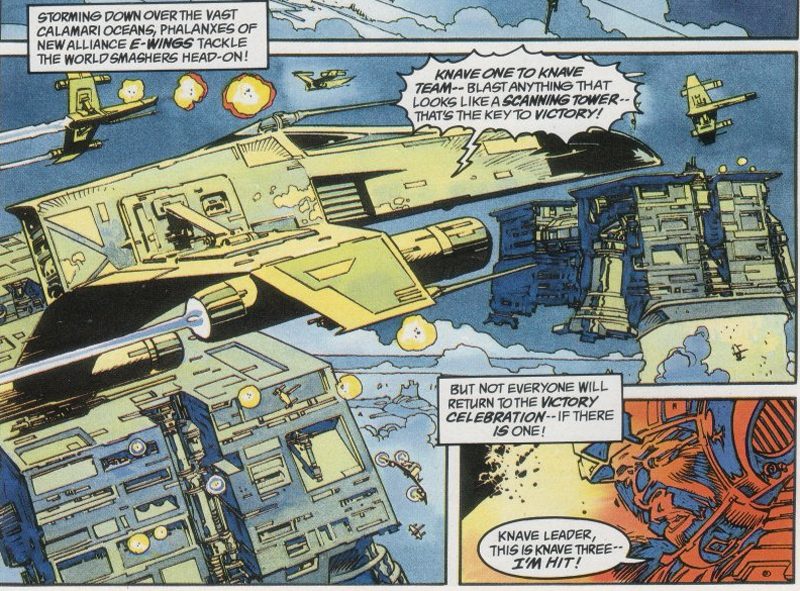
The E-Wing debuted in the pages of Star Wars: Dark Empire, the 1992 Dark Horse Comic series by Tom Veitch and Cam Kennedy depicting the return of Emperor Palpatine six years after the events of Return of the Jedi. Established there as the new space superiority fighter of the New Republic, after years of Alliance production on other fighters came through defecting research scientists or sparse internal development, the E-Wing was the first starfighter designed entirely under the support of the reformed government, with a budget and technology to match.
The E-Wing was designed as the ultimate evolution of the X-Wing as the New Republic’s multi-role fighter—not as specialized as the A-Wing, Y-Wing, or B-Wing, the E-Wing nevertheless represented an all-around approach to combat, with improved weaponry, shielding and armor, speed, and sensor capability compared to the X-Wing. With the New Republic immediately beset by a series of Imperial successor states, from the Thrawn Campaign to the returned Emperor, the E-Wing was pressed into service alongside prior Alliance navy staples like the X-Wing, even as it was being presented as the starfighter’s eventual replacement.
Growing Pains
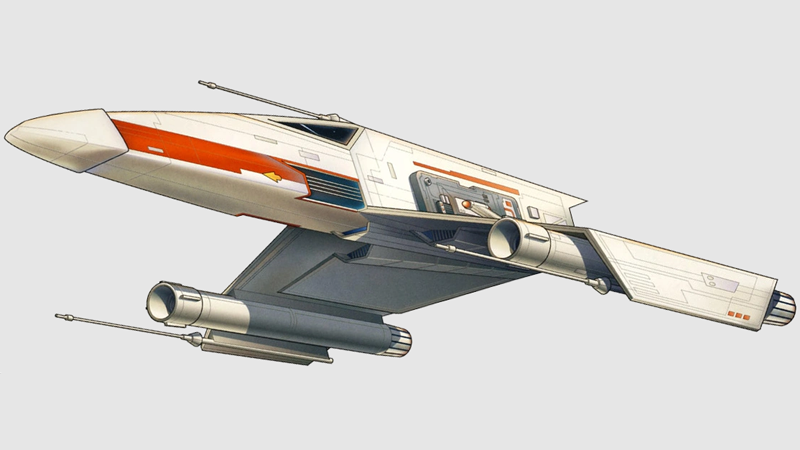
Metatextually, replacing the X-Wing is a daunting prospect: it’s arguably the most iconic starfighter design in cinema history, and one of the most memorable pieces of Star Wars iconography to this day. That’s perhaps why—even as the nascent EU introduced the E-Wing as the superior and eventual replacement to the X-Wing—it almost immediately hobbled its chances to be grasped by Star Wars readers within the fiction as well.
The rapid rollout of the E-Wing and its advanced technology led to a series of setbacks that kept the X-Wing as the de facto starfighter of choice for the New Republic in its early days. Unlike the X-Wing or the Y-Wing, the E-Wing was initially designed as the first starfighter to exclusively use R-7 series astromech droids as navigators and co-pilots, and the ship was not backwards compatible with the prior R-series astromechs already in service. It was integration of the R-7 into the E-Wing’s design that made the ship a significantly costlier vessel to produce compared to prior starfighters, but it also hindered the E-Wing’s operational ability when issues with the droids arose.
The E-Wing’s advanced weaponry also faced technical struggles in its early development as well. Although the three heavy blaster cannons of the starship had greater strength than the X-Wing’s quad-cannon setup, the synthetic gas that powered them degraded at a much faster rate, vastly reducing the E-Wing’s combat effectiveness over extended engagements. The unreliability of the initial E-Wing and the necessity for space-ready forces led to many New Republic pilots sticking to the X-Wing.
The Rise and Fall
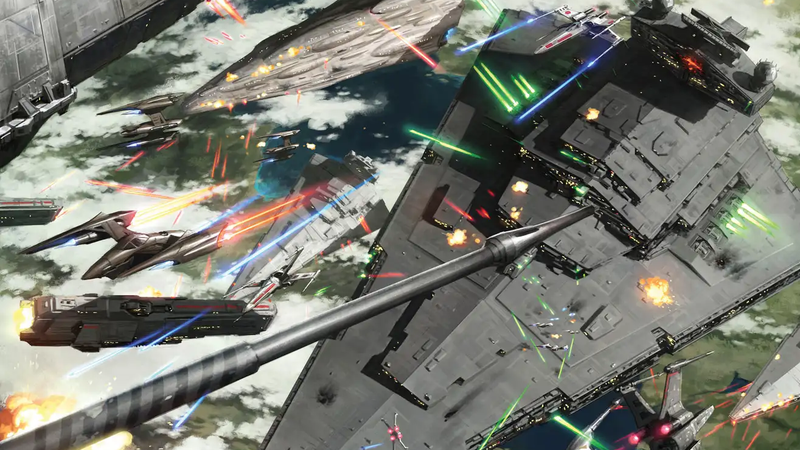
As the Star Wars Expanded Universe grew, and the E-Wing found itself embedded into its continuity across novels and RPG source materials, textually the ship eventually overcame its initial development hurdles. Generations into its service for the New Republic—it was still in operation nearly four decades after it was first introduced—the E-Wing had seen four major iterations, each one improving on the teething issues of the initial ship, letting the E-Wing flourish as an elite vessel.
But even though the E-Wing was the original face of the New Republic Navy, its initial struggles led to the X-Wing being further developed in its capacity as a multi-role starfighter, and the vessel maintained its position as a primary starfighter for squadrons not at the forefront of the New Republic’s military efforts—save for Rogue Squadron, which almost exclusively remained using the X-Wing as its primary vessel, both due to piloting familiarity and its useful presence symbolically.
Decades after the E-Wing was meant to have replaced the X-Wing with the outbreak of the Yuuzahn Vong War, Incom introduced the XJ variant of the iconic vessel. Although its improved weapons and systems didn’t quite match the E-Wing’s capabilities, the J-Series X-Wing was cheaper to produce, and became the go-to fighter of the New Jedi Order and the Galactic Alliance that went on to replace the New Republic. By the time the Star Wars Expanded Universe was in its twilight, the E-Wing had gone from being the X-Wing’s intended replacement to being kept in its proverbial shadow.
The E-Wing Reborn
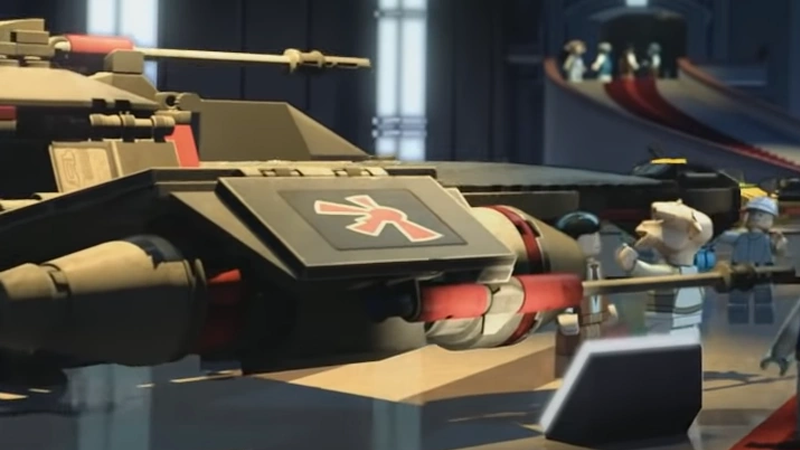
When Star Wars continuity was relaunched in 2014, little information was initially made clear of the events that took place in the roughly 30 years between the events of Return of the Jedi and what would become The Force Awakens. What we did know was that the E-Wing was no more—firmly resigned to what was now dubbed “Legends” continuity. What little early material that explored the post-Return of the Jedi landscape maintained the X-Wing as the primary starfighter of the New Republic, and as new Star Wars continuity lead the reformed government down a path of de-militarization, the development of a new starfighter standard for the navy was not on the cards.
But for all its setbacks textually and metatextually, the E-Wing couldn’t be kept down. While the vessel maintined a fandom presence through sourcebooks and games like the X-Wing tabletop miniatures game from Fantasy Flight, its first flittering signs of re-introduction came in the 2017 Lego animated series The Freemaker Adventures—and although like other ancillary Lego material its place in the “everything’s canon” continuity established by Disney and Lucasfilm was kept decidedly away from other mainline material, it marked the first time the E-Wing appeared in the new era.
Sparks of Hope
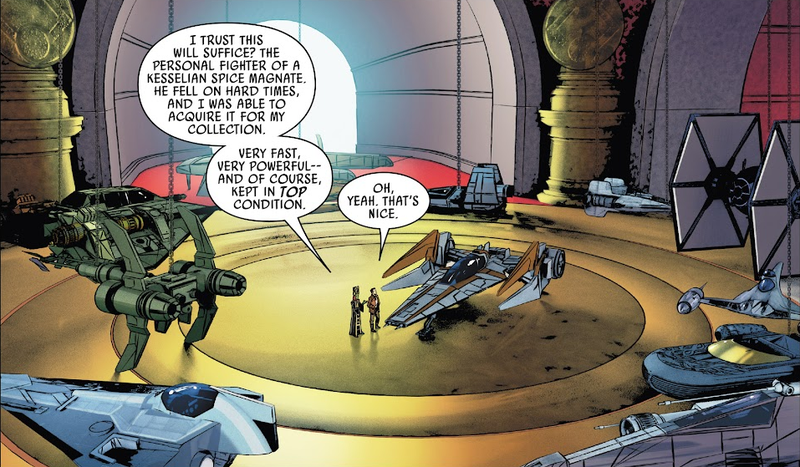
The E-Wing would make its first officially canonical appearance in the 2018 Marvel comic Poe Dameron #23, by Charles Soule and Angel Unzueta, appearing as an unacknowledged Easter egg in a collection of starships for a single panel. It’s not until this year’s Ahsoka streaming series—set around a decade after the events of Return of the Jedi—that the E-Wing was revealed to have become part of live-action Star Wars material, briefly glimpsed in trailers in scenes featuring Rebels character Sabine Wren on the planet Lothal.
How much of a role the ship plays in the series remains to be seen, but given its initial first steps into the reborn Star Wars continuity, it’s perhaps fitting that it’s getting its own Lego set—just like the version seen in Freemaker Adventures was inspired by, the 2013 “Jek-14’s Stealth Starfighter” model created for the Yoda Chronicles animated series.
What’s Next?
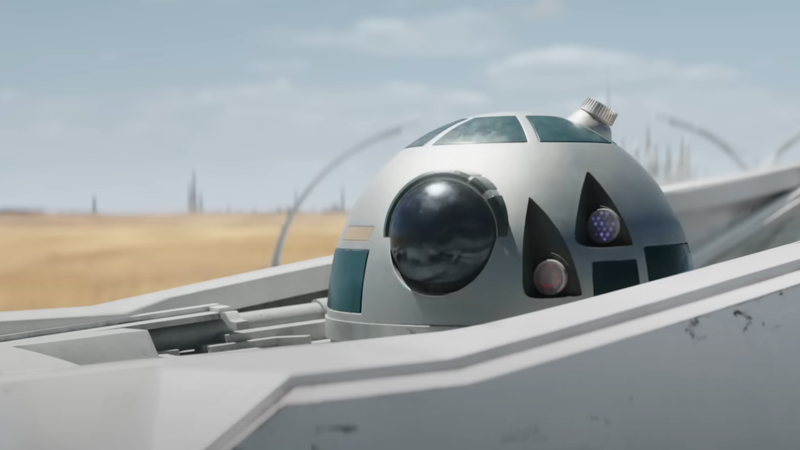
But just as EU fans can be overjoyed at the E-Wing’s return to mainstream Star Wars prominence, questions remain as to just how long that prominence will last. After all, by necessity of Ahsoka’s place in the timeline, we know the E-Wing is not bound to be around for all that long. In the material from this period of the Star Wars timeline so far, the X-Wing has remained the primary starfighter of what little we’ve seen of the New Republic. Official novels set across the 30-year period between Return of the Jedi and The Force Awakens have seen the Republic institute a policy of disarmament, vastly reducing its own naval forces in lieu of ceding military operations to planetary defense forces.
And in a familiar echo of its fate in the Star Wars Expanded Universe, we also know that by the time of the sequel trilogy, the X-Wing has once again become the face of our hero’s space superiority fighters: this time with the creation of the T-70 model, the updated design that became the iconic ship of the Resistance in The Force Awakens and its sequels. With the E-Wing nowhere to be found in those movies, perhaps it’s safe to assume that in the current continuity the vessel faced an even more dire fate than its EU counterpart—not just overshadowed by iterations on its more famous sibling but completely erased by it.
That fate, however, is not yet written—there’s plenty of room for more stories in this period of Star Wars, and there’s of course many different ways to explain away the E-Wing’s absence from the sequel trilogy. There’s always a little truth in legends, of course, and this venerable vessel is as fine an example of that as any of the old EU revivals in canon we’ve had so far.